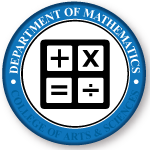Document Type
Article
Publication Date
2016
Publication Title
Applied Numerical Mathematics
Abstract
We develop and analyze a new residual-based a posteriori error estimator for the discontinuous Galerkin (DG) method for nonlinear ordinary differential equations (ODEs). The a posteriori DG error estimator under investigation is computationally simple, efficient, and asymptotically exact. It is obtained by solving a local residual problem with no boundary condition on each element. We first prove that the DG solution exhibits an optimal O(hp+1) convergence rate in the L2-norm when p-degree piece-wise polynomials with p ≥1 are used. We further prove that the DG solution is O(h2p+1) superconvergent at the downwind points. We use these results to prove that the p-degree DG solution is O(hp+2) super close to a particular projection of the exact solution. This superconvergence result allows us to show that the true error can be divided into a significant part and a less significant part. The significant part of the discretization error for the DG solution is proportional to the (p +1)-degree right Radau polynomial and the less significant part converges at O(hp+2) rate in the L2-norm. Numerical experiments demonstrate that the theoretical rates are optimal. Based on the global superconvergent approximations, we construct asymptotically exact a posteriori error estimates and prove that they converge to the true errors in the L2-norm under mesh refinement. The order of convergence is proved to be p +2. Finally, we prove that the global effectivity index in the L2-norm converges to unity at O(h)rate. Several numerical examples are provided to illustrate the global superconvergence results and the convergence of the proposed estimator under mesh refinement. A local adaptive procedure that makes use of our local a posteriori error estimate is also presented.
Recommended Citation
Baccouch, Mahboub, "Analysis of a posteriori error estimates of the discontinuous Galerkin method for nonlinear ordinary differential equations" (2016). Mathematics Faculty Publications. 5.
https://digitalcommons.unomaha.edu/mathfacpub/5
Funded by the University of Nebraska at Omaha Open Access Fund


Comments
Published under Creative Commons license CC BY-NC-ND 4.0.
©2016 IMACS. Published by Elsevier B.V.